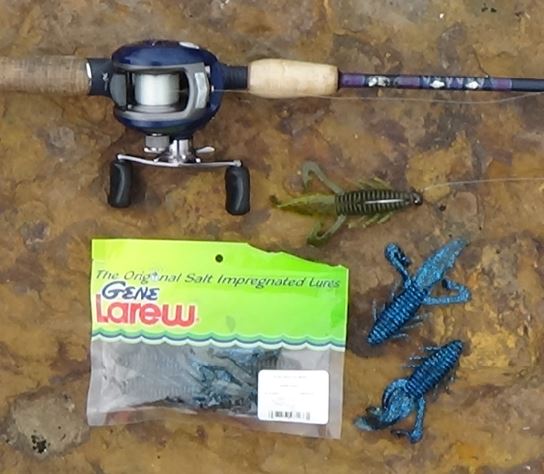
How to use a Biffle Bug
With bass fishing season in full swing, it’s always nice to know what lures are hot so when the fish start bitin’, you can start catchin’. That’s why learning how to use a biffle bug can be one of the best things that will ever happen to you. Of course, it can depend on the weather and the mood the fish are in on any given day. But more often than not, we’ve found that this set up works 9 times out of 10.
We recommend:
The Gene Larew 4.25” Biffle Bug in either Green Pumpkin/Chartreuse Pepper or Sapphire Blue
Gene Larew 3/16 oz. Biffle HardHead
Rod and Reel Combo: Bass Pro Shops
When it comes to knowing how to use a biffle bug, we like to rig our biffle bugs on a biffle hardhead for added movement and lifelike action. These hooks fit perfectly with the 4.25” bait, which makes rigging easy. We always leave the point of the hook slightly submerged in the back of the bait for a weedless setup. To see how we rig it, watch our video.
When we fish with the biffle bug, we cast, allow it sink to the bottom, then bob the bait up and down 2-3 times, followed by 3-4 spins of the reel. Repeat.
We’ve heard comments about not being able to detect if a fish is biting when using this type of bait. Generally, as soon as you cast, if you feel it “hit” or “snag” something, it’s probably a fish. Set the hook just in case. Pay attention to the line in the water. If it starts to drift, there is a good chance you might have a bass on the other end. Usually, if the fish are aggressive you’re going to know when you have a bite right away and you can set the hook. With a weedless rig on the biffle bug, we try to set the hook with a little extra power so that the hook can penetrate the bait and the fish’s mouth at the same time. With a little practice, you’ll know how to use a biffle bug and be a biffle buggin’ pro in no time!
Keep on Rippin’!
Texas Bass Angler

Upshaw says that he uses his finesse tactics everywhere he fishes, noting that he “really likes using them on lakes where most anglers wouldn’t use them, such as Toledo Bend and Sam Rayburn reservoirs in Texas.” What’s more, they are extremely effective on all waterways that are heavily fished.